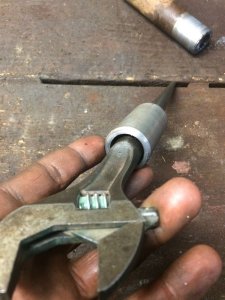If you have any electronics experience, this uses those cheap scales and gives you the capabilities of much more expensive readout systems: DIY DRO Project | Yuriy's Toys
I used the AcuuRemote brand scales and Yuriy's stuff to update a surface grinder at work, we use it with a diamond saw to slice up experimental integrated circuits!
I used the AcuuRemote brand scales and Yuriy's stuff to update a surface grinder at work, we use it with a diamond saw to slice up experimental integrated circuits!

